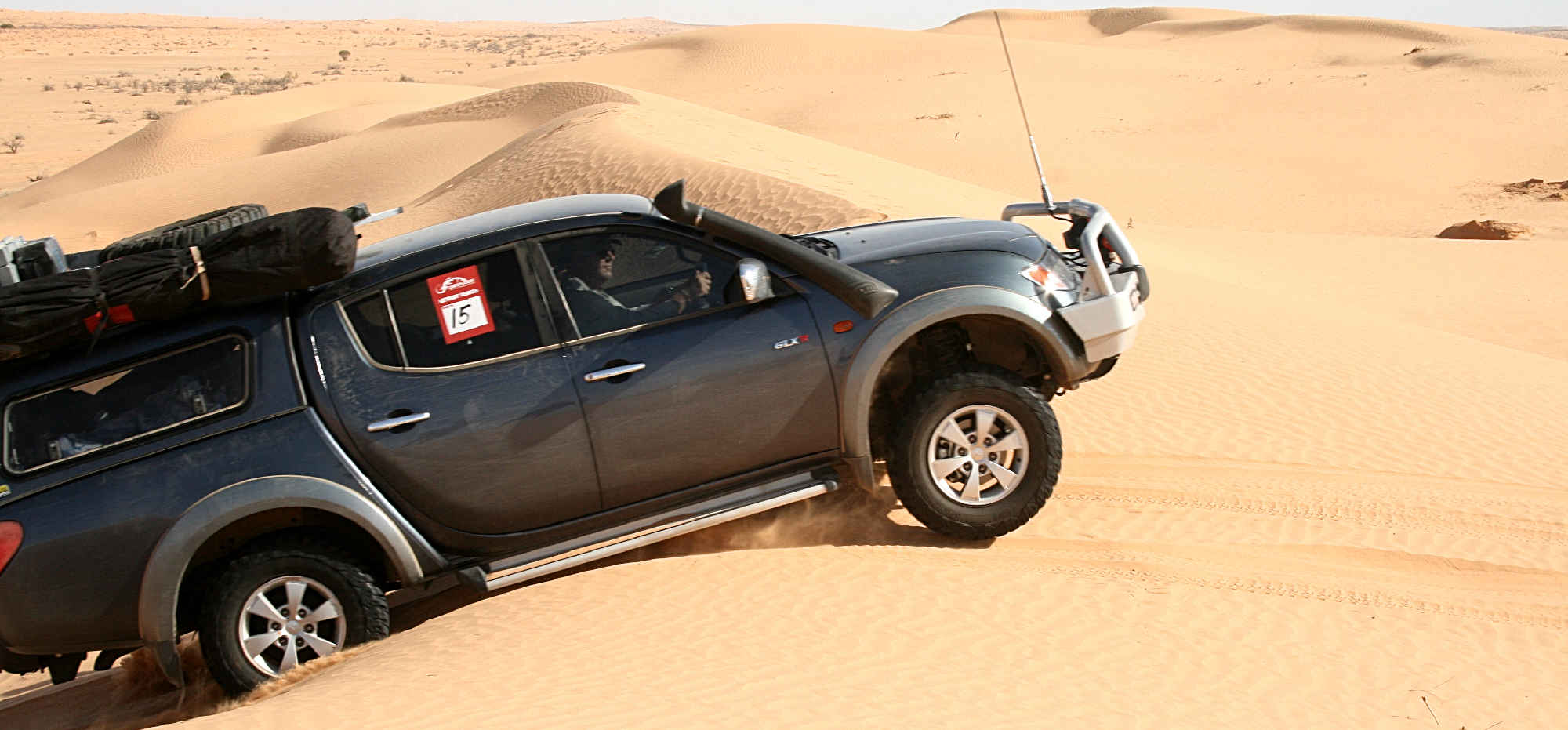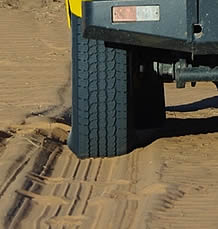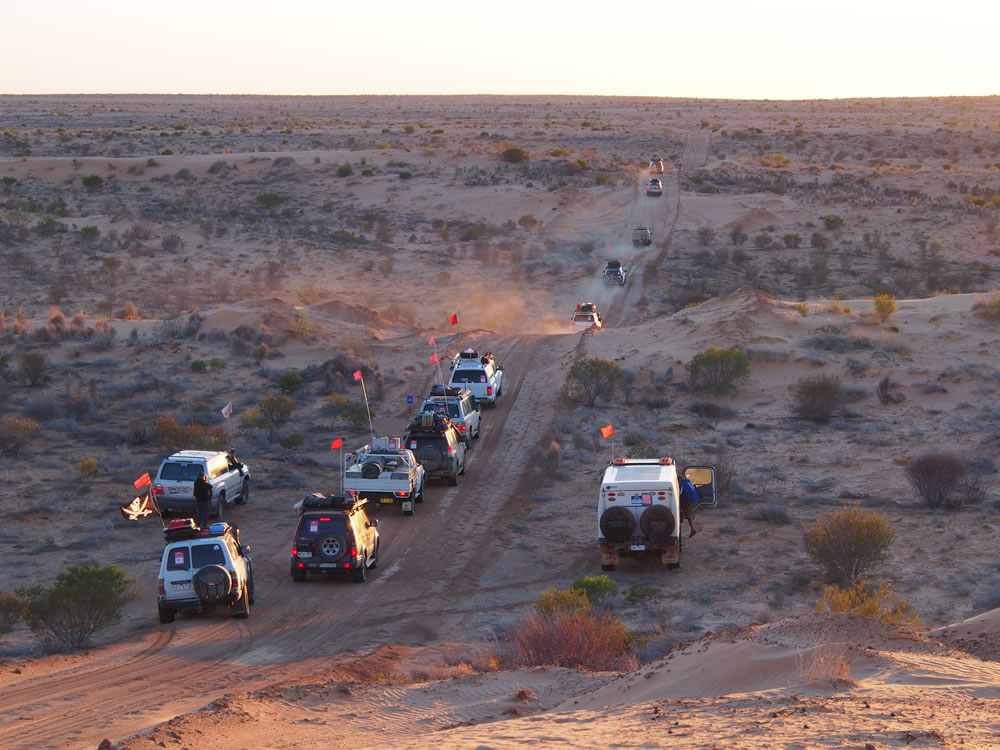
Driving in Sand
Driving in Sand (Inexperienced Drivers)
As a support crewman or official in the Simpson Desert Bike Challenge, you will be traversing the Simpson Desert in convoy with other experienced drivers. You can rely on the convoy leader and other crew for support and advice during the trip.
If you are an inexperienced off-road driver, it is recommended that before the event you undertake a 4WD training course. This will teach you 4WD techniques, recovery techniques, vehicle care and safety practices so that you enjoy your trip more. You should also practice your sand driving to find what tyre pressure and 4WD range best suits your vehicle.
Driving in sand is only for vehicles with high ground clearance; it is important to note that not all 4WDs have enough clearance to negotiate dune crests and dunes.
Try not to over-rev your engine. Choose high range second or third gear, or low range third of fourth. Get up to your chosen speed before you enter the sand then maintain that speed. Avoid slowing or stopping and do not brake abruptly or you will bury the front wheels.
Tyre Pressure

Generally once you hit the dirt roads on the way to the Simpson Desert, you will drop your tyre pressures a bit and drive more slowly to decrease the chance of tyre damage.
Once in the desert and driving over soft ground, you will decrease your tyre pressures some more thus increasing the surface area in contact with the ground. Failure to do so will make the journey difficult for you and leave the track in poor condition for others.
Experience over the years has shown that correct tyre pressures are critical.
In the gibber country on the way in, and around Birdsville, pressures around 25-35 psi seem to suit most.
Once we hit the sand, around 25 psi rear and 20 psi front suits most.
Optimum tyre pressure varies depending on the vehicle and load. Ask your convoy leader if in doubt.
Winches and Snatch Straps
When used correctly, vehicle recovery equipment such as a winch or snatch strap can be invaluable. However, when used incorrectly or without adequate training, they can be lethal.
If you are inexperienced in the use of this equipment, discuss with your convoy leader.
Safety Tips
- Always use engineered recovery points to attach a snatch strap.
- Keep bystanders well clear, at least 1.5 times the length of the strap.
- Make sure bystanders are not in the line of the path of recovery.
- Make sure shackles, straps and cables have adequate load ratings.
- Drape a recovery damper or heavy tarp/blanket over the cable or strap to reduce rebound.


